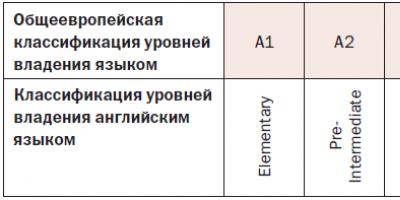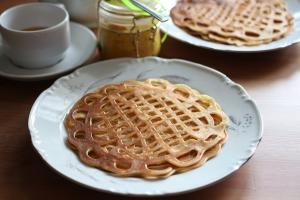If you live in a private house, then you have some opportunities that residents of government apartments do not have. You can grow your own vegetables and fruits, have your own livestock and treat yourself to fresh, organic products. True, the cattle still need to be kept somewhere. And here they go to great lengths - they drive the poor cattle anywhere, even into premises that are completely unsuitable for that purpose.
Usually, the first living creature that new gardeners and owners of private houses get, not counting cats and dogs, are chickens. This is understandable, because they are not at all difficult to care for at any time of the year. Spring and summer are generally a pleasure– it is enough to arrange a canopy where they can hide from the sun or bad weather, and provide them with the necessary nutrition. And in winter it’s a little more difficult. Of course, no one would even think of taking them into the house, and in a flock with tools, the chickens will die from the cold. But don’t despair. Even a barn that looks like a sieve and is blown through by all the winds can be insulated for chickens.
Insulating a barn with sawdust
This material can be obtained in abundance at any sawmill and for a devilishly reasonable price. The sawdust should be fine and dry.
 We dilute sawdust with lime 1/25, respectively. If you are insulating a shed with sawdust, then make sure that the distance between the parallel walls, which you fill with shavings, is at least 25 centimeters.
We dilute sawdust with lime 1/25, respectively. If you are insulating a shed with sawdust, then make sure that the distance between the parallel walls, which you fill with shavings, is at least 25 centimeters.
We fill the material in layers, constantly compacting it. Then you need to wait a couple of weeks until the insulation settles. After which you will need to add sawdust.
The insulation of the ceiling in the barn follows approximately the same scheme. But here you need to lay another layer on top of the insulation layer. We don’t just cover it, but there should be either a plastic film between it and the insulation layer.
When insulating a shed, add at least 10 centimeters in height above the base level. Then pour in and compact the clay. But with this method of floor insulation, you should immediately warn that the barn will always be dirty. If you want a clean floor, then replace the soil with expanded clay and fill it on top cement-sand screed. But this will have to be done in advance during the warm season.
Insulating a shed with shingles
 Shingles are made from straw and are safe and environmentally friendly. Shingles can act as a reinforcing material, since straw prevents the clay from cracking and crumbling. Such material can last for many years under a layer of plaster.
Shingles are made from straw and are safe and environmentally friendly. Shingles can act as a reinforcing material, since straw prevents the clay from cracking and crumbling. Such material can last for many years under a layer of plaster.
By mixing clay with straw, you can make bricks- adobe, from which you can make an excellent warm shed. If the barn has already been built, it can be insulated from the inside with shingles.
 Shingles are wooden dies, which are stuffed onto the walls from inside the room. It is these that you will cover with clay and straw. The dies are packed in two layers diagonally. One layer goes in one direction, the second in the opposite direction. This way you should end up with a diamond-shaped mesh. Once the base is prepared, you should soak the clay until it resembles sour cream. While stirring, add straw in portions.
Shingles are wooden dies, which are stuffed onto the walls from inside the room. It is these that you will cover with clay and straw. The dies are packed in two layers diagonally. One layer goes in one direction, the second in the opposite direction. This way you should end up with a diamond-shaped mesh. Once the base is prepared, you should soak the clay until it resembles sour cream. While stirring, add straw in portions.
Then stir for some time until the solution becomes thick enough not to fall off the base. Before use, the mixture should sit a little longer. Next, apply the mixture from bottom to top.
The layer should be at least 3 centimeters thick.
 Leveling is done with a spatula. In the corners, increase the layer thickness to 5 centimeters. If cracks form after drying, do not be alarmed - just cover them with clay-sand mortar. Finally, in order for ours to last a long time, we need to plaster the walls and whitewash them. Insulating a shed with shingles contains a significant disadvantage - despite its cheapness, it will require a lot of time and effort from you.
Leveling is done with a spatula. In the corners, increase the layer thickness to 5 centimeters. If cracks form after drying, do not be alarmed - just cover them with clay-sand mortar. Finally, in order for ours to last a long time, we need to plaster the walls and whitewash them. Insulating a shed with shingles contains a significant disadvantage - despite its cheapness, it will require a lot of time and effort from you.
Insulating a shed with mineral wool
 There are faster methods, but at the same time more expensive. Of these options, the best of their kind are
There are faster methods, but at the same time more expensive. Of these options, the best of their kind are
Often in a subsidiary plot or on a small farm there is a need to insulate rooms and buildings where animals and poultry are kept. Usually these structures are not permanent, made of boards and plywood.
The goal of insulation is to maintain a positive temperature all winter without heating or with its minimum power - up to 2 kW for a building of about 30 square meters, and also to make the insulation extremely cheap. But that doesn't mean bad. Savings occur on finishing, “branded” materials, fastening design, and also because it is done with your own hands.
Simple cracks - large heat leaks
It is necessary to insulate a chicken coop, barn, and barn in a comprehensive manner. Most heat escapes with air exchange. No heating can withstand a draft...
First of all, you need to install the second glass on the sealant, if there is a window. Effective insulation windows - for the winter, install 15 mm above the glass along the strips on the sealant plastic film- double glazing for the chicken coop. At a minimum, it is necessary to seal the cracks in windows and frames.
But there should be no non-adjustable gaps under doors or windows - this is the basis for insulating any building.
How to insulate a chicken coop?
Where it is necessary to insulate a chicken coop, a poultry house or barn is often found in large quantities “underfoot.” natural insulation materials– straw, hay and wood shavings (small sawdust is not suitable). 
To prevent any living creatures from growing in them, they need to be prepared. You will need lime (fluff, crumbly) and this is the main cost - one volume of lime per 10 volumes of material. And - boric acid And copper sulfate — excellent tools against rotting.
In order for the material to be used in panels, it must be strengthened by adding 1 part of cement to 10 parts of material. A solution is made with the addition of antiseptics and mixed with the required volume of shavings, hay, and straw. It is laid in panels, on the ceiling when wet, and when dried it gains strength. 
It is advisable to prepare hay and straw with a length of 20 - 30 mm, which is sometimes problematic and labor-intensive. But it is the finely cut material that is easy to use and has the best heat-saving properties.
An alternative to all this is the use of polystyrene foam, a very cheap insulation material, especially if purchased in bulk. Sometimes it is cheaper, and most importantly faster and easier to install.
But lining with foam plastic will disrupt the steam exchange in the wood; over time, the structures may begin to rot and rot.
However, more often than not this is not critical for a chicken coop; besides, with other insulation materials you have to use vapor barriers, which also negatively affects the wood. Therefore, insulating a barn, poultry house, or chicken coop with polystyrene foam, as a very cheap insulation material, can be recommended as a way out of the situation.
We insulate the ceiling in a chicken coop or barn
First of all, we insulate attic floor. You will have to use a vapor barrier, you can use ordinary thick polyethylene film. Without it, the insulation will get wet faster than dry. We cover it with overlaps over the entire area of the ceiling with a fold over the walls. 
If nothing will be stored in the attic, then it is enough to cover it with treated (but without cement) hay-straw in a layer 20 - 25 cm thick. But if you plan to walk regularly, then it is better to make the flooring on a sheathing with a height of at least 20 cm, taking into account the ventilation. gap (insulation thickness 17 cm).
Dense foam from 25 kg/m3. with a minimum thickness of 12 cm, you can lay it without lathing in two layers with bandaging the seams in the layers, and throw boards and plywood on top of it, on which you can walk.
When using polystyrene foam, it is advisable to seal all the cracks with polyurethane adhesive crumbs.
How to insulate the walls of a barn, stable...
The plank walls need to be converted into shields. There should be a dense layer on the inside that prevents steam, and on the outside it should be more vapor-permeable. If there is no dense layer of material from the inside, then it is advisable to apply a vapor barrier from the inside in front of the straw insulation, just like on the roof.
The order of work is to install from the outside (or from the inside, which is better?) vertical bars 12 cm thick, 600 mm increments, and between them fill in organic insulation with cement, sequentially filling the missing cladding from the bottom up. External cladding cover with something water-repellent, for example, even waste oil.

The peculiarity of using polystyrene foam on walls is the absence of a vapor barrier and careful sealing of cracks. Dense foam plastic can be glued to the walls, and on top of it glue some kind of protection from ultraviolet radiation and water - the same thin plywood, which can be coated with paint on top. The recommended foam thickness is 10 cm.
We insulate floors and soil
Usually in a chicken coop, barn, or barn, the floors are made over compacted soil with some kind of bedding. Their insulation often comes down to adding natural (unprocessed) straw, hay, and shavings to the living creatures. You just need to remember to turn the contaminated layer over and change it in time. 
In winter, soil is a natural heater for outbuildings, barns, and garages. Positive temperatures can be maintained by the heat of the earth. For this to happen, it is important to insulate the soil around the perimeter of the barn or poultry house to a width equal to the freezing depth in the given area.
It is best to butt end-to-end extruded polystyrene foam with a thickness of 8 cm or more to the foundation. But this is not cheap. Another option is the same hay and straw 15 - 20 cm thick, protected from precipitation by shields, slate with a slope, and from soil vapor - by roofing felt. Or simply - hay with a thickness of 50 cm, covered with boards - a pile. Even when wet, such a layer will give the desired effect....
As you can see, insulating a chicken coop or barn can really not be expensive at all. Such insulation, as a rule, is done by hand, but the labor intensity is not small, and the quality will depend on the care of execution...
Making adobe
Now you need to prepare adobe - a clay mortar reinforced with straw or sawdust. Place the clay in an ordinary metal bucket (10 l) or in a trough and begin adding water to it in small portions. After each portion, we will stir the solution, achieving a homogeneous mass. Pour water until the solution takes on a creamy appearance. Then add straw to the mixture.
Anything will do - fresh or even last year, the main thing is that it is good quality, without mold and rot. If you have problems with straw, you can use sawdust, which can be easily purchased for little money at any sawmill or construction market. We add the material by eye; the result should be a thick mixture, similar in consistency to liquid cement.
It is not necessary to use a separate container - in the warm season you can grow adobe directly on the street. To do this, cover a small area of the ground with waterproof film. In the center of the site we will form a clay hill, in the middle of which we will make a depression. Pour water in there and stir the mixture with your feet (alas, the work is dirty). Then add pre-soaked straw. The approximate proportion is 14-16 kg of straw (or sawdust) per 1 m 2 of clay. Stir thoroughly again. Saman is ready.
Apply the solution
So, let's start insulating the walls. We apply adobe mortar to the prepared sheathing made of wooden shingles. We throw the clay mixture over the slats and inside the cells, and then level it with a spatula. We throw the solution from below and then up the wall. The layer thickness should be 4-7 cm, but no more, otherwise the material may crack severely in the future. Now let's let the walls dry, which may take several days. If they still appeared somewhere small cracks, coat them with a solution that we mix from clay and sand in a 1:2 ratio. At the final stage, we will cover the surfaces of the walls with slaked lime.
Polystyrene foam and mineral wool
We mount the frame
This method is more expensive because you have to purchase expensive materials. But it is not very labor-intensive and it will not take much time to implement it. First of all, we cover the walls with a vapor barrier film, on top of which we mount a frame made of wooden blocks. Also suitable metallic profile under drywall. Moreover, a more reliable solution will undoubtedly be metal elements. The distance between metal slats or bars should be 2-3 cm less than the width of the mineral wool slabs, and the depth of the cells should correspond to the thickness of the thermal insulation.
We install insulation
Now that the frame is ready, we put cotton slabs into it. They will be held in it naturally due to compression on both sides. If one of the slabs turns out to be slightly larger than necessary and does not fit into the sheathing cell, carefully cut it with a knife. However, you can also use foam blocks. It is good because, unlike cotton wool, it does not allow moisture to pass through or accumulate, but you still cannot do without a vapor barrier. The foam should be mounted on a special adhesive composition. For additional fixation, it is recommended to use disc dowels. The ceilings are also insulated using the methods described.
We fasten the casing
As finishing we cover the frame with any insulation sheet material- plywood, OSB boards or chipboard. To make the surface look more aesthetically pleasing, it can be painted.
We insulate the floor
 Soil and clay
Soil and clay
It often happens that flooring there is no space in the barn and there is only bare earth underfoot. In this case, the easiest way to insulate the floor is to use available materials, for example clay and soil. You can dig both on your own site or near the nearest river. Place a layer of soil at least 10 cm thick on top of the old earthen floor. After this, we will make a mound of clay and compact it properly. If you plan to keep chickens in the room, you will have to add sawdust and lay straw on top.
Expanded clay and cement
The advantage of this method is that the floor will always be smooth and clean. We lay expanded clay backfill, level it, and make a sand-cement screed on top. This process is very labor-intensive, and construction skills will be required to complete it. But at the same time, you no longer have to tinker with the soil on the floor.
 Gothic PU Leather Jacket Women's Hoodies Winter Autumn Motorcycle...
Gothic PU Leather Jacket Women's Hoodies Winter Autumn Motorcycle...
1849.85 rub.
Free shipping★★ ★★ ★★ ★★ ★★ (4.20) | Orders (2765)
A barn for chickens is like a house for a person. That is why it must be comfortable, cozy and, of course, warm, so that birds can stay in it both in the warm and cold seasons. It must be taken into account that their productivity will depend on the living conditions of the chickens. How to insulate a poultry barn from the inside for the winter? What materials are best to use for this? This will be discussed further (see video).
Construction of a “warm” structure
Of course, the best option The shed will be built immediately with insulation. Most often it is built from gas or foam blocks, which themselves store heat, but this option will not be the cheapest. To save money, the structure can be built with wood concrete. The material is a mixture of cement, wood shavings and sawdust. With its help, you can create a building of any size and do not require a solid foundation, since wood concrete is quite lightweight.
Despite the undeniable advantages of wood concrete, it has one drawback - it does not tolerate strong humidity. That is why the erected walls must be finished with plaster mortar, and also a waterproofing layer must be made, for example, using roofing felt. The floor of the shed can be made of wood, which itself is quite warm. In order for chickens to lay roosts in winter, it is best to make them from the same wood and insulate them with straw.
Simple insulation methods
Sometimes it happens that you can’t immediately think about insulating a shed. In this case, this can be done immediately before winter. Often a mixture of straw, clay and sawdust is used for these purposes. Insulate wooden structure for chickens it is possible by plastering it from the inside. To do this, nails are driven into the walls, and a thread or wire is stretched between them, forming a mesh. This is necessary for greater strength of the plaster. The applied layer of solution should have a thickness of no more than 5 centimeters, otherwise it will not adhere well.



The previous methods are good if the winter in the region is not too severe. Otherwise, to insulate the shed from the inside, it will be necessary to use polystyrene foam or mineral wool (see photo). For thermal insulation of a room mineral wool First, you need to nail wooden slats to the walls. They should be placed strictly vertically and at a distance from each other slightly less than the width of the roll insulation material. In this case, they will completely cover the surface and will not need to be further secured. Finally, the surface is sheathed with sheets of plywood, which wooden slats can be attached using self-tapping screws. When insulating a chicken shed from the inside with polystyrene foam, you need to remember that the birds will most likely peck at it. Therefore, it will need to be either finished or sheathed on the outside of the walls.
Using scrap materials
To quickly insulate a chicken barn, any available materials, such as straw, will be useful. To do this, just throw it on the floor. You can insulate the floor using the same method. old clothes. If the frosts in the region are too severe, you can build a small brick stove in the chicken coop, as, for example, in the photo. It is highly not recommended to use metal in this case, because it gets very hot, and chickens can get burned on it. For greater practicality, the stove can be made with a cooking area, where you can cook food for birds and animals that are on the farm. It is recommended to heat such a structure with wood.
Another way
You can insulate the walls of the barn in another way. For this you will need:
- wooden boards;
- hammer;
- nails;
- sand;
- clay;
- construction float;
- any medium-sized vessel;
- bars 5x5 centimeters;
- sawdust.
Wooden boards are nailed to the surface of the walls at an angle of 45 degrees, starting from the upper left corner. They should be located at some distance from each other. After the entire surface is filled with them, they must be attached in the same way with a slope in the other direction to form diamonds. Next you need to make a mixture of water, sawdust and clay. You need to stir them so that the consistency of liquid sour cream is formed. After preparing the solution, it needs to sit for some time.




After all the above work, you can begin plastering the surface using the resulting mixture. To do this, you need to pick it up and spread it first at the bottom of the wall, carefully leveling it, smoothly moving up. The layer of plaster mortar, in order to properly insulate a chicken barn, must be at least 5 centimeters. Special attention must be given to the corners of the structure. After the entire surface has been plastered, it must be given time to dry. This may take several days. If cracks appear on the surface of the walls during this time, they will need to be carefully repaired with a mixture of sand and clay. Then the walls will need to be slightly leveled using a float.








